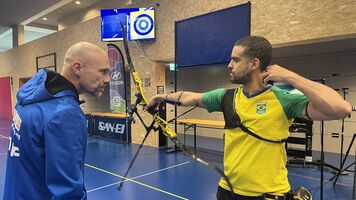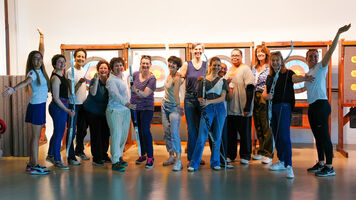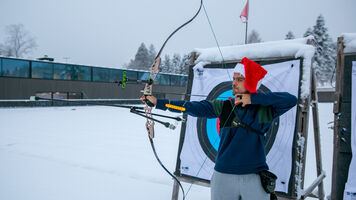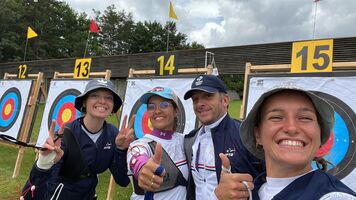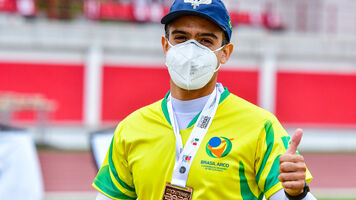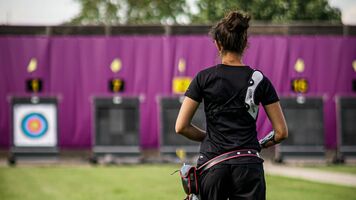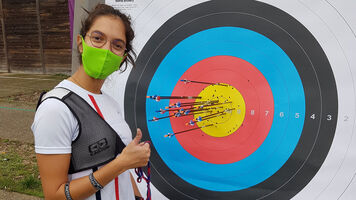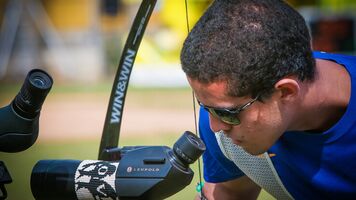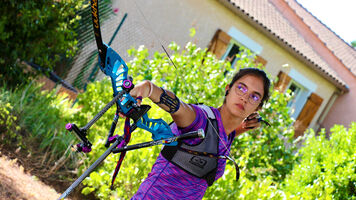Why virtual events are a must for improving archers right now

Park Youngsook, also known as Sally, is an Olympian and renowned archery coach who has developed the elite programmes in Malawi and Bhutan.
For a long time, many archers around the world couldn’t participate in competitions – overseas, national or even close to home – because of the COVID-19 pandemic.
I was responsible for developing the elite archers of Bhutan. Athletes, in any sport, need competition. That’s what they’re training for.
So I was determined to find a way to allow my athletes to compete.
With very few flights from Bhutan and lots of travel restrictions, I decided the event would have to be virtual, and there seemed like plenty of others doing the same thing.
I contacted Shin Hwa Su, a coach at a middle school in Korea, who agreed to participate and we set a date.

The first event took place on 3-4 June 2020 between six archers from Bhutan’s junior national team and three girls from the Korean school. They shot a qualification round, followed by remote individual and team matches.
We set up cameras on the shooting line and the targets and scored the matches via an application so everyone could see and follow what was happening.
These young Bhutanese archers had never competed in an international event before but they were wearing the uniforms of the national team, there were coaches and there was an atmosphere.
It was a taste of a real event.
And the archers said they could feel the tension.
I prepared a few prizes for the Bhutanese archers, like packs of rice and bottles of oil. The national Olympic committee and federation gave some sports shoes.

After that first attempt at a virtual event, we organised five more competitions between July 2020 and April 2021, with teams from Chinese Taipei, Japan, Switzerland and Malawi joining.
Formats varied from 72-arrow qualifying rounds at 70 metres to 18 metres, sometimes followed by matches, sometimes not.
Each competition was good. But we felt there was more we could be doing.
I wanted to organise a true international with all the countries we might see on the shooting line. I contacted friends, colleagues, archers and judges from all over the world – and we found plenty keen to take part.
In the end, 126 archers from 18 countries competed in the first International Virtual Friendship Competition 16 October 2021.
(Six of them were para archers.)

Jeoung Kyeong Su, the resident coach in the World Archery Excellence Centre in Lausanne, made athlete numbers for everyone and archers wore them to compete, just like at a normal event.
We picked a simpler format – just two 72-arrow 70-metre qualifying rounds, which was much easier to handle than head-to-head matches with all the time zones.
Coaches had to send over photos of all the signed scorecards.
I was so excited when I started receiving the messages.
We made certificates for all the participants. Two Bhutanese archers received some cash prizes, even.
Two years after the start of this pandemic, with travel still difficult or impossible for some smaller countries, these archers were rewarded for their hard work in training.

I don’t think there’s a world in which virtual competitions replace real competitions. That’s not what they’re for.
But I also don’t think that, as we slowly recover from the pandemic and the difficulties with travel are lifted, the value in hosting virtual events disappears entirely.
Because while border restrictions are more obvious nowadays, there has always been a simple limitation – and that’s budget.
For developing countries, where sports might not have much funding or archery might not be a priority due to a lack of infrastructure of historical success, it’s difficult to find the funds to send teams to compete.
(And this applies to more local clubs, too.)
But without exposure to competition, how can archers really improve? Or prove that they’re capable of attaining results?
Ultimately, virtual events offer an opportunity to break that cycle. It’s why they’re important now – and should remain on the agenda in the future.
Content images courtesy of Park Youngsook.


